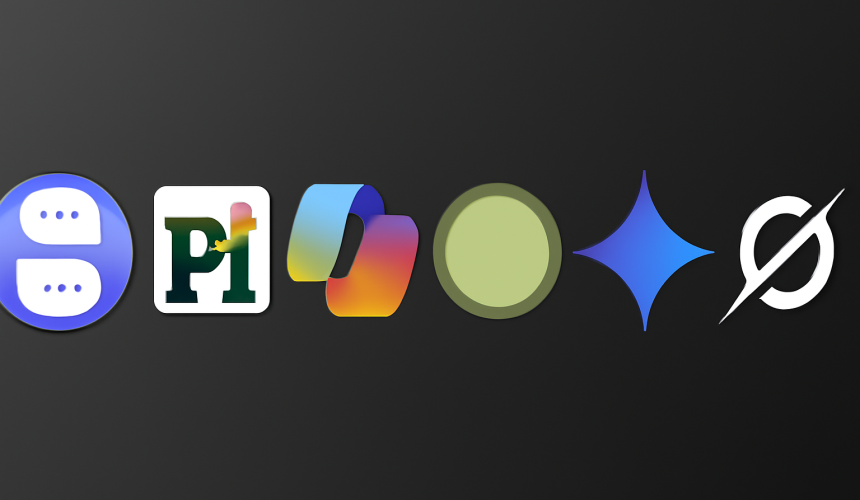
Struggling with English? Compare the best free vs paid English speaking apps of 2025 and find the perfect AI-powered tool for fluency and confidence!
I always felt shy speaking English. I tried free apps, but progress was slow. Then I switched to a subscription app and something clicked.
That little confession above could be from you, me, or any learner trying to bridge the gap between silent reading and confident speech. In 2025, the world is flooded with English conversation apps, AI English speaking apps, English conversation practice apps, and English speaking course apps. But with so many options free, freemium, premium — how do you choose?
The Starting Line: Why Use an English Conversation App at All?
Once upon a time, people joined language institutes or hired private tutors to practice speaking. That meant scheduling, going somewhere, cost, and performance anxiety. But apps changed that:
- They are always “on” — you can practice anywhere, anytime
- Many are cheaper (or free) than offline courses
- Especially AI English speaking apps can give instant feedback
- You get variety: you can try English talking app, English speaking course app, even English speaking call app features in one place
However — there’s a catch. Not all “free” is really useful, and not all paid is worth it. That’s where the debate begins.
Free vs Paid: Pros & Cons (in a Story of Two Learners)
Let me introduce you to two imaginary learners:
- Anita, a college student on a tight budget, who only uses free apps
- Ravi, a working professional willing to invest in a subscription app
Pros & Cons: Free English Conversation Practice Apps
Pros:
- Zero cost barrier, you can begin today
- Useful for beginners to get exposure
- Some apps let you try English conversation app features or English talking app calls in limited amounts
- Low risk: you can test what you like
Cons:
- Feature limitations (e.g. limited daily calls, limited topics)
- Ads or distractions
- Lack of advanced content or personalized paths
- Sometimes slower progress due to weaker feedback, no human or tutor support
Pros & Cons: Paid / Subscription English Speaking Course Apps
Pros:
- Rich content: full modules, varied conversation topics, advanced levels
- Better feedback, more refined AI English speaking app engines
- Access to human tutors, live calls, peer conversations
- No or fewer ads
- Usually more consistency and motivation (you’ve paid, so you use it)
Cons:
- Cost may deter many
- If you underuse, it doesn’t justify cost
- Some paid apps may lock features behind “premium tiers”
- Quality varies — paying doesn’t always guarantee quality
In our little story: Anita stayed stuck at simple dialogues, repeating the same free content. Meanwhile, Ravi (though busy) progressed faster because his subscription app unlocked more practice, live calls, and real-scenario speaking.
Spotlight on 3 Popular Apps: Free, Hybrid, Premium
ELSA Speak (AI Pronunciation Coach)
What it is / What it does
ELSA is an AI English speaking app focused on pronunciation, fluency, and speaking scenarios.
Free version features:
- Access to some lessons, basic pronunciation feedback
- You can try a few topics or scenario dialogues
Paid / Premium features:
- Full library of lessons
- More advanced feedback (intonation, stress, fluency)
- More scenario types
- Tailored modules for tests or workplace English
Pros:
- Very good AI voice recognition
- Focused training on tricky sounds and pronunciation
- Good for learners who already have some vocabulary and want to polish speaking
Cons (even in paid):
- Doesn’t provide many real-time conversation calls (it’s more speech practice than live talk)
- Free version is too limited for serious progress
Some users say the feedback can occasionally be unclear or hard to understand exactly what to correct
Cambly (Native Speaker Chats)
What it is / What it does
Cambly is a platform for real conversations with native English tutors via video chat. It’s more of an English conversation app and English speaking call app.
Free version / trial:
- Very limited or no free trials; usually, you have to pay to access tutor time
- Sometimes they give very short trial or discounted offers
Paid features:
- One-on-one live tutoring
- Conversations on topics you choose
- Ability to replay recorded sessions, get transcripts, get feedback
- Structured plans and packages
Pros:
- Real human interaction — extremely valuable for fluency, spontaneity
- Immediate feedback from a live tutor
- You can select tutors who speak your variant of English (British, American, etc.)
Cons:
- It can get expensive if you take many sessions
- Requires scheduling or availability of tutors
- Sometimes connection issues or unstable internet during calls
Less “self-paced content” compared with structured modules
MySivi (Subscription-Based All-in-One)

What it is / What it does
MySivi is an AI English speaking app built for conversation practice, connecting co-learners, and scenario-based speaking.
Free / trial features:
- Users can use some features free (e.g. 30 minutes daily access in free model)
- You can try conversation calls with co-learners or limited AI practice
Paid / subscription features:
- Unlimited conversation calls (peer + AI)
- Full access to structured lessons, scenario modules, and progress tracking
- No ads or limitations
- Better analytics, deeper feedback, advanced modules
Pros:
- Balanced mix: AI + real conversation (through co-learners)
- Good for learners who need both structured modules and real talking practice
- Designed especially for non-native English users (India in particular)
- Solid user base and ratings
Cons:
Like all subscriptions, if you don’t use it enough, cost might feel heavy
How to Decide: Which Model Fits YOU in 2025?
Let’s imagine you again — but with a guided checklist. Ask yourself:
- How serious are you?
If English speaking is crucial (for work, relocation, study), a paid app might yield faster returns. - How much time can you commit?
If you’ll use it daily for 20–30 minutes, subscription apps pay off. If only 5 minutes per week, frees may suffice. - What kind of speaking do you need?
- If you need pronunciation polish, an AI English speaking app like ELSA or MySivi helps.
- If you need real conversation fluency, an English conversation app or English speaking call app (like Cambly) is better.
- If you want both, go for a hybrid approach (MySivi is one).
- If you need pronunciation polish, an AI English speaking app like ELSA or MySivi helps.
- Budget vs ROI
Don’t overspend. Start with a free mode or trial. If you notice progress and engagement, upgrade. - Quality over hype
A cheaper subscription is useless if content is weak. Always test or use free trials first.

Subscription Model: Strengths & Weaknesses
When Ravi upgraded to a subscription with MySivi, he unlocked unlimited English conversation calls, scenario modules like “Job Interviews” or “Travel Talk,” and advanced analytics that tracked his fluency growth. That kind of depth is rarely available in free apps.
Strengths of Subscription Based Model
- Rich content & variety: You get lessons across levels and topics without hitting “locked” walls.
- Better feedback: AI correction becomes more detailed (stress, intonation, grammar).
- Live interaction: If your subscription includes it (e.g. via co-learners or tutors), you get real conversational practice.
- Motivation & consistency: When you pay, you’re more likely to stick with it.
The Future of English Learning: Is AI the Game-Changer?
In 2025, AI English speaking apps are likely to dominate the language learning scene. With advanced machine learning capabilities, these apps can provide personalized lessons, speech recognition, and even simulate real conversations. But how do you know if AI-based apps are truly worth it? Here’s why they might be the future:
- Instant feedback: AI can immediately correct your pronunciation and grammar.
- Personalization: Based on your speech patterns, AI can provide tailored lessons.
- Availability: Unlike a tutor, an AI-powered app is always available, giving you more practice hours.
While AI still has room for improvement, it’s already making waves in apps like MySivi and ELSA. As we look ahead, these tools will become even smarter, making English learning more efficient and accessible to all.
Weaknesses to watch out for
Underuse risk: If you pay but don’t log in enough, cost per hour becomes high.
Feature gating: Sometimes essential modules are buried behind top-tier plans.
Quality variability: Not every paid app is excellent — check reviews.
For Ravi, the upgrade paid off because he had a clear goal (nail job interviews). But for someone just exploring, a free model might be a better first step.
Final Thoughts: Is It Time to Go Premium?
At the end of the day, the choice between free and paid English speaking apps boils down to your goals, commitment, and budget. Free apps can give you a solid foundation, but if you want to move faster and dive deeper into conversations, the investment in a subscription-based English speaking course app like MySivi could be the game-changer you need.